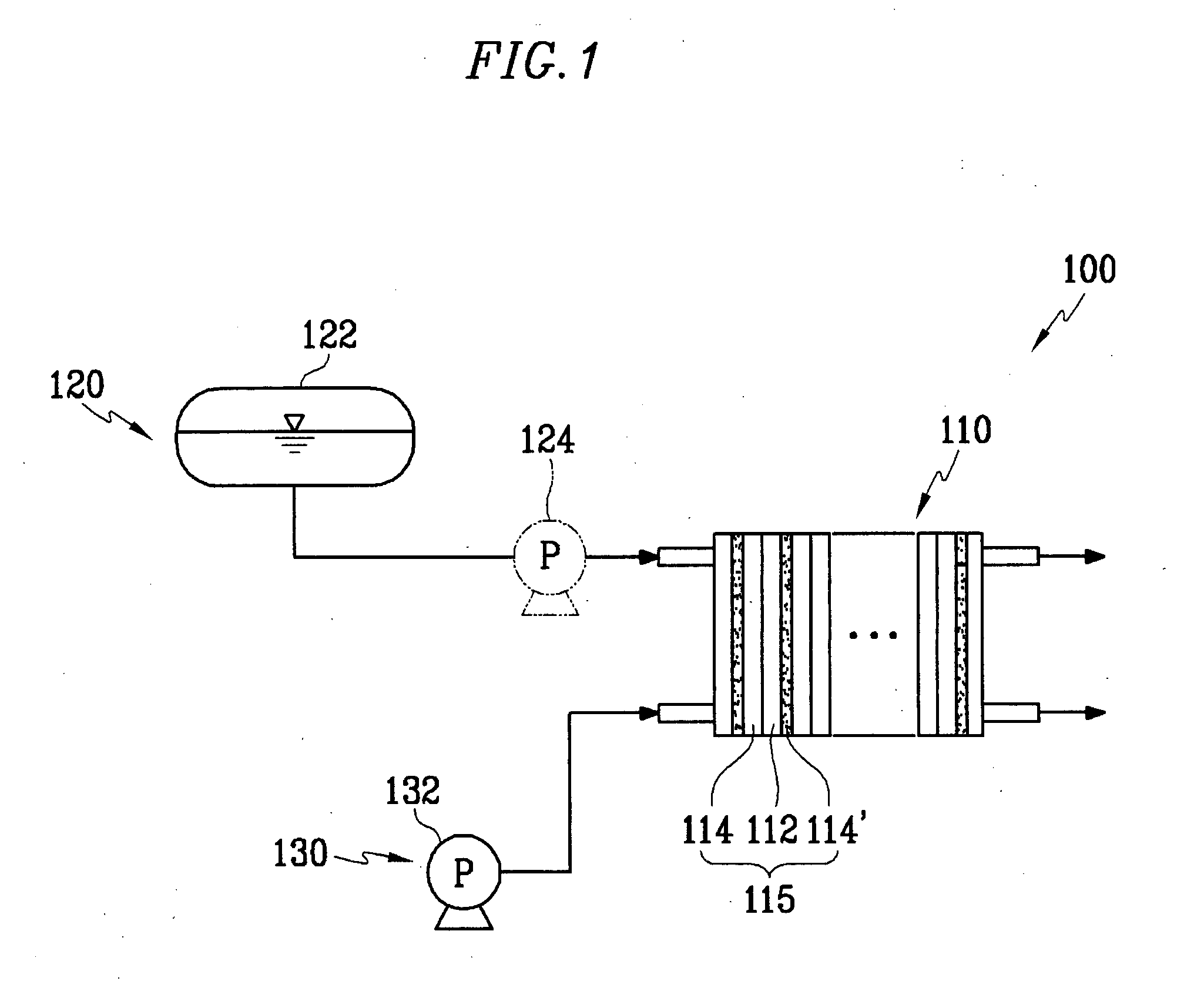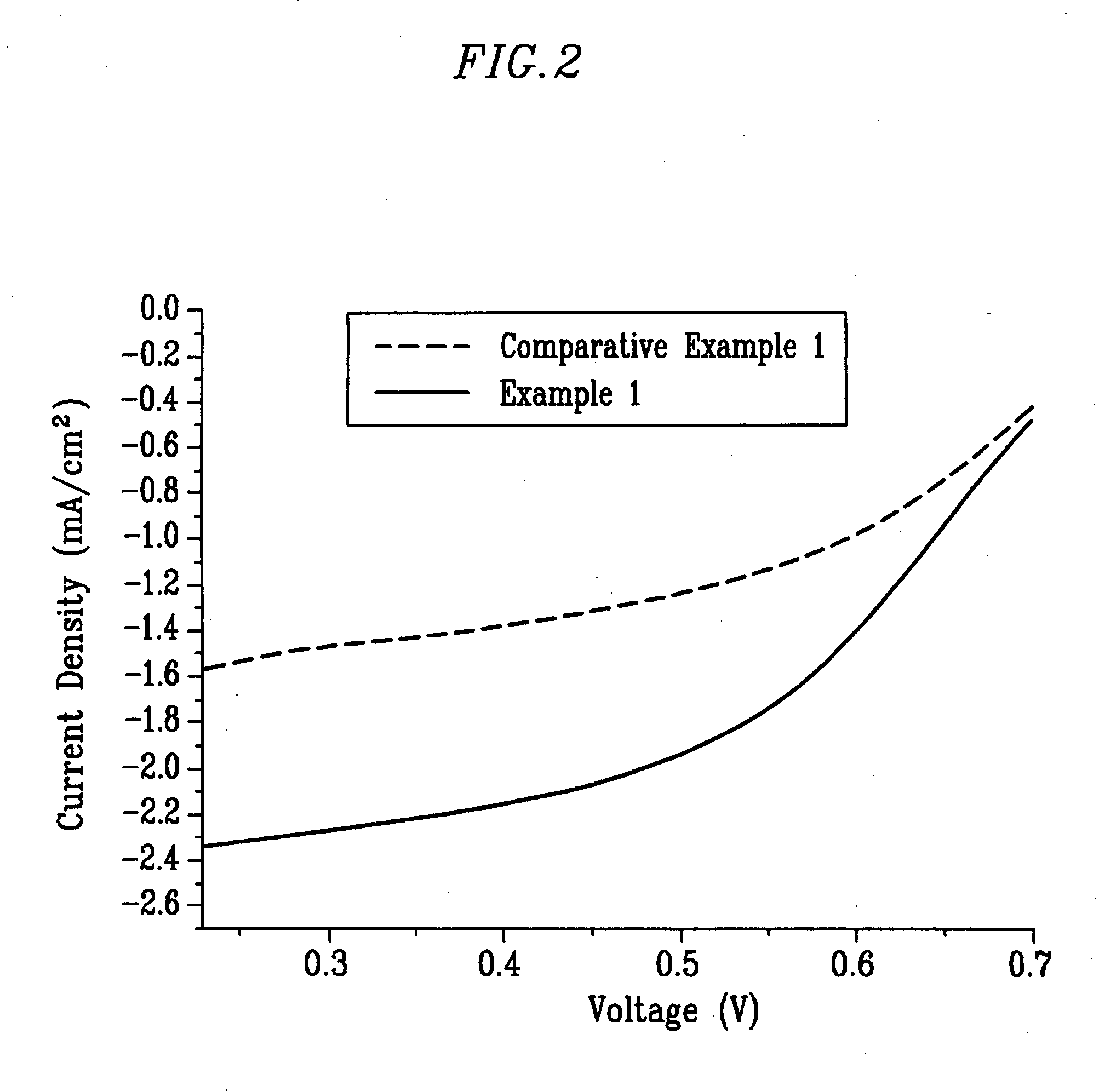Cathode catalyst for a fuel cell, and a membrane-electrode assembly for a fuel cell and a fuel cell system comprising the same
- Summary
- Abstract
- Description
- Claims
- Application Information
AI Technical Summary
Benefits of technology
Problems solved by technology
Method used
Image
Examples
example 1
[0062] 1.3 g of copper acetylacetonate and 1.5 g of C36H51Cl2NbO3 were dissolved in 15 ml of isopropyl alcohol, and 1 g of ketjen black was added thereto. The resulting product was agitated for 4 hours. Then, it was dried at 250° C. for 3 hours under vacuum, producing a powder including a Cu—Nb-containing oxide supported in ketjen black. 0.25 g of H2TeO3 was dissolved in 2 ml of water, and the powder was mixed therewith. The resulting product was heat-treated at 400° C. for 3 hours under a hydrogen atmosphere, producing a CuNbTe / C catalyst.
[0063] Herein, the catalyst included a CuNbTe compound in a ratio of 46 atom % of Cu, 31 atom % of Nb, and 23 atom % of Te. In addition, an active material including the CuNbTe compound had a particle size of 2.5 nm, and 67 wt % of the CuNbTe compound was supported in ketjen black.
example 2
[0064] 1.3 g of Ag(NO)3 and 4.3 g of Hf[OC(CH3)3] were dissolved in 15 ml of isopropyl alcohol, and 1 g of ketjen black was added thereto. The resulting product was agitated for 4 hours. Then, it was dried at 250° C. for 3 hours under vacuum, producing a powder including a Ag—Hf-containing oxide supported in ketjen black. 0.03 g of a Se powder was dissolved in 2 ml of water, and the powder was mixed therewith. The resulting product was heat-treated under a hydrogen atmosphere at 400° C. for 3 hours, producing a AgHfSe / C catalyst.
[0065] Herein, the catalyst included a AgHfSe compound in a ratio of Ag: 47 atom %, Hf: 32 atom %, Se: 21 atom %. In addition, an active material including the AgHfSe compound had a particle size of 2.2 nm, and 64 wt % of the AgHfSe compound was supported in ketjen black.
example 3
[0066] 2.1 g of Cu(NO3)2 and 3.8 g of Ta(OCH2CH2CH2CH3)5 were dissolved in 15 ml of isopropyl alcohol, and 1 g of ketjen black was added thereto. The resulting product was agitated for 4 hours. Then, it was dried at 250° C. for 3 hours under vacuum, producing a powder including a Cu—Ta-containing oxide supported in ketjen black. 0.06 g of S powder was dissolved in 2 ml of water, and the powder was mixed therewith. The resulting product was heat-treated at 400° C. for three hours under a hydrogen atmosphere, preparing a CuTaS / C catalyst.
[0067] The catalyst included a CuTaS compound with a ratio of Cu: 49 atom %, Ta: 31 atom %, and S: 20 atom %. In addition, an active material including the CuTaS compound had a particle size of 2.7 nm, and 67 wt % of the compound was supported in ketjen black.
PUM
| Property | Measurement | Unit |
|---|---|---|
| Temperature | aaaaa | aaaaa |
| Particle diameter | aaaaa | aaaaa |
| Ratio | aaaaa | aaaaa |
Abstract
Description
Claims
Application Information
 Login to View More
Login to View More - R&D
- Intellectual Property
- Life Sciences
- Materials
- Tech Scout
- Unparalleled Data Quality
- Higher Quality Content
- 60% Fewer Hallucinations
Browse by: Latest US Patents, China's latest patents, Technical Efficacy Thesaurus, Application Domain, Technology Topic, Popular Technical Reports.
© 2025 PatSnap. All rights reserved.Legal|Privacy policy|Modern Slavery Act Transparency Statement|Sitemap|About US| Contact US: help@patsnap.com



